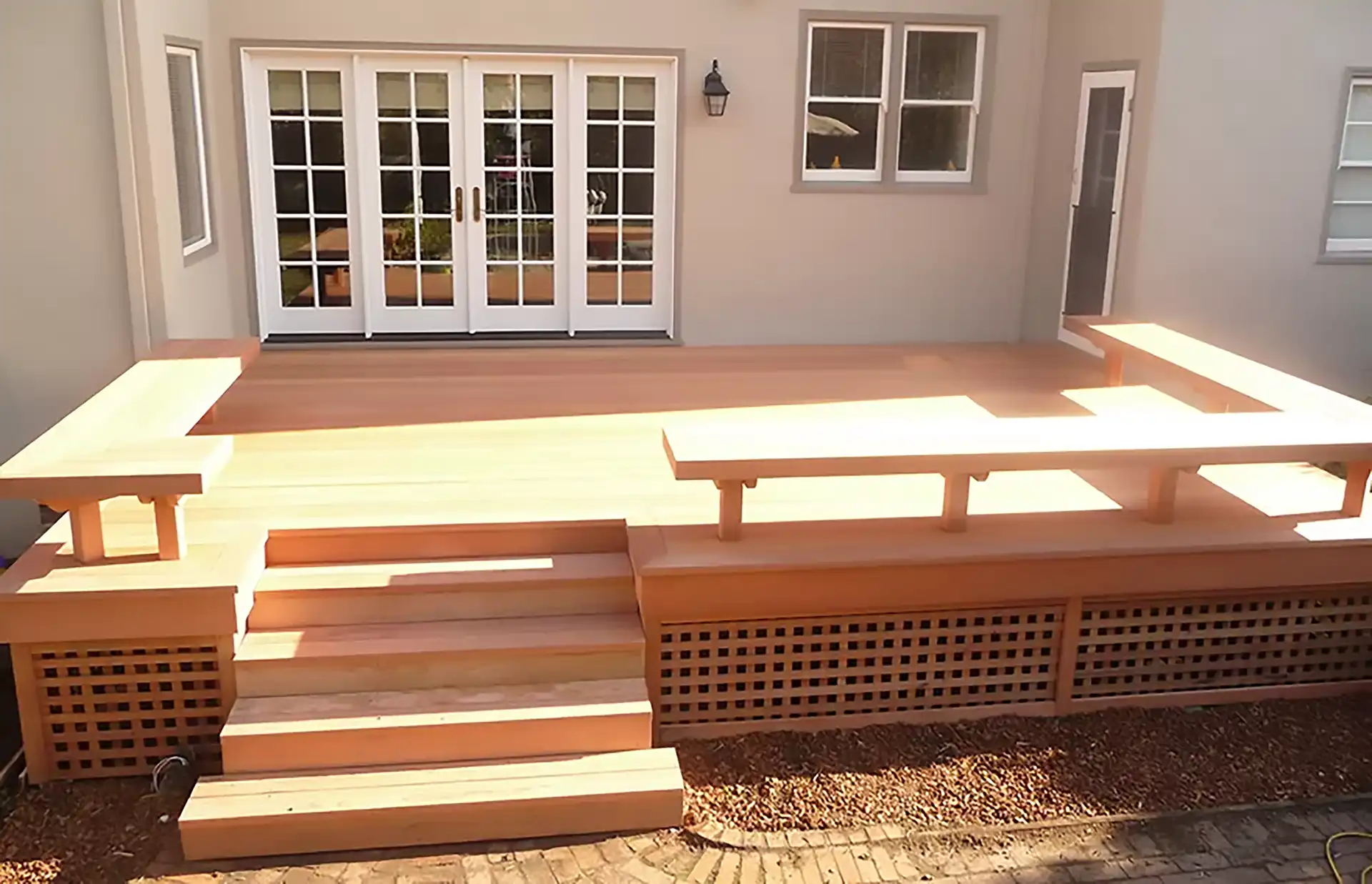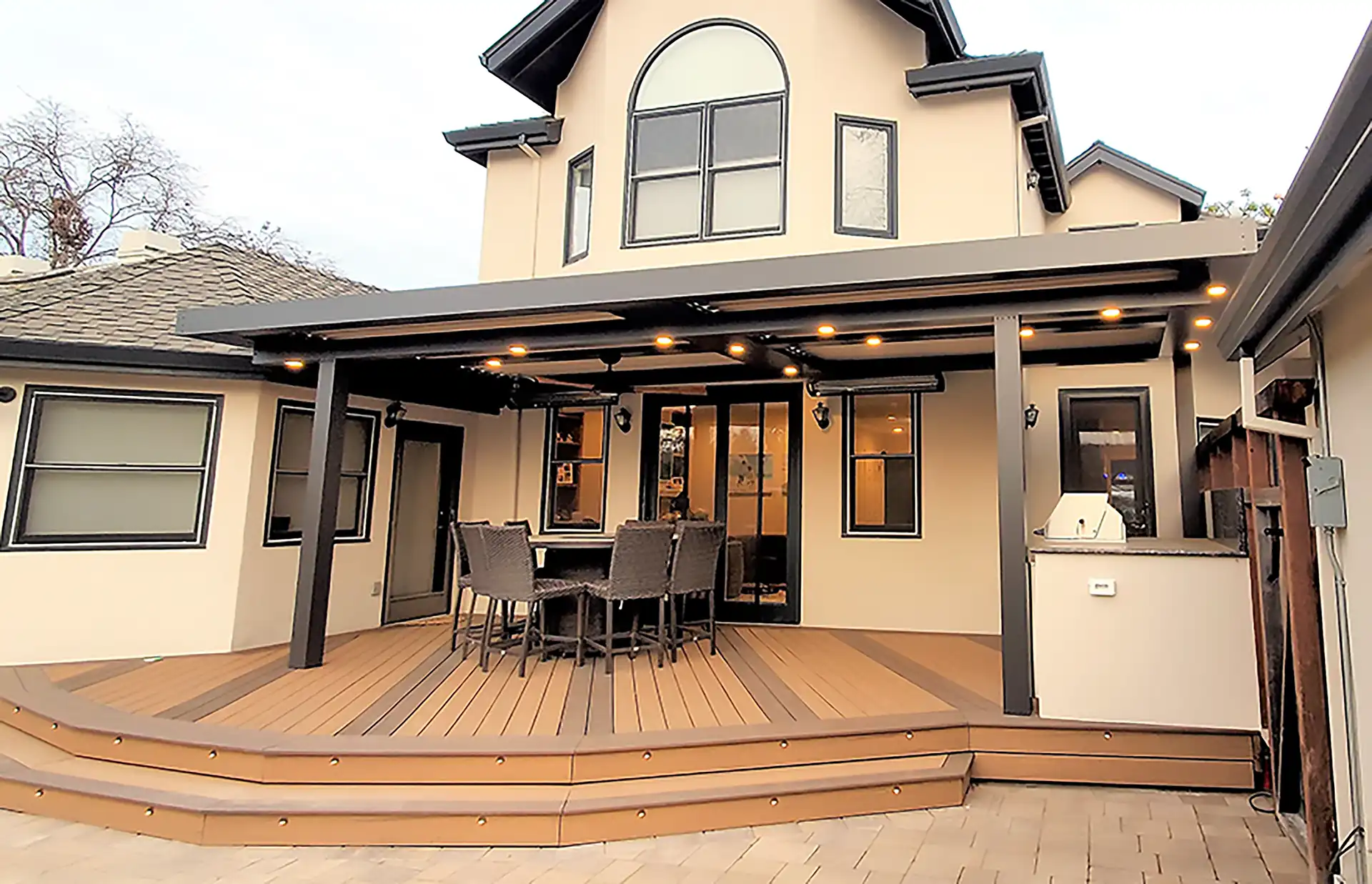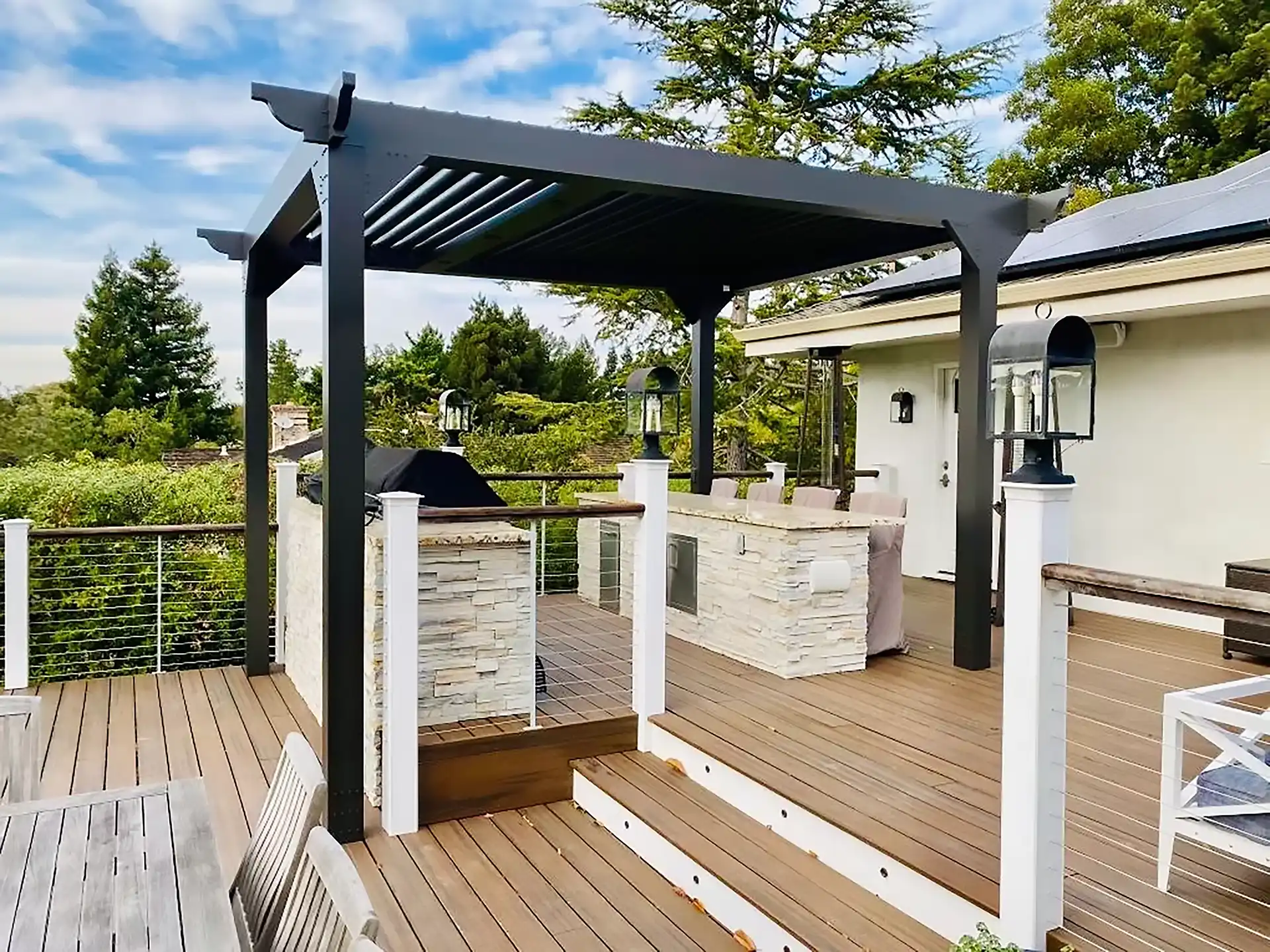In today’s busy world, homeowners want outdoor spaces that are beautiful and easy to maintain. Composite decks provide the perfect solution, offering the durability of advanced materials with the look of natural wood but without the constant upkeep.
Whether you want to enhance your backyard with a new deck or replace an old wooden one, composite decking offers long-term value and style. At J. Perretti Builders, we’ll explore composite decks, how they compare to wood, and why they’re the ideal choice for your outdoor living space.
What Are Composite Decks?
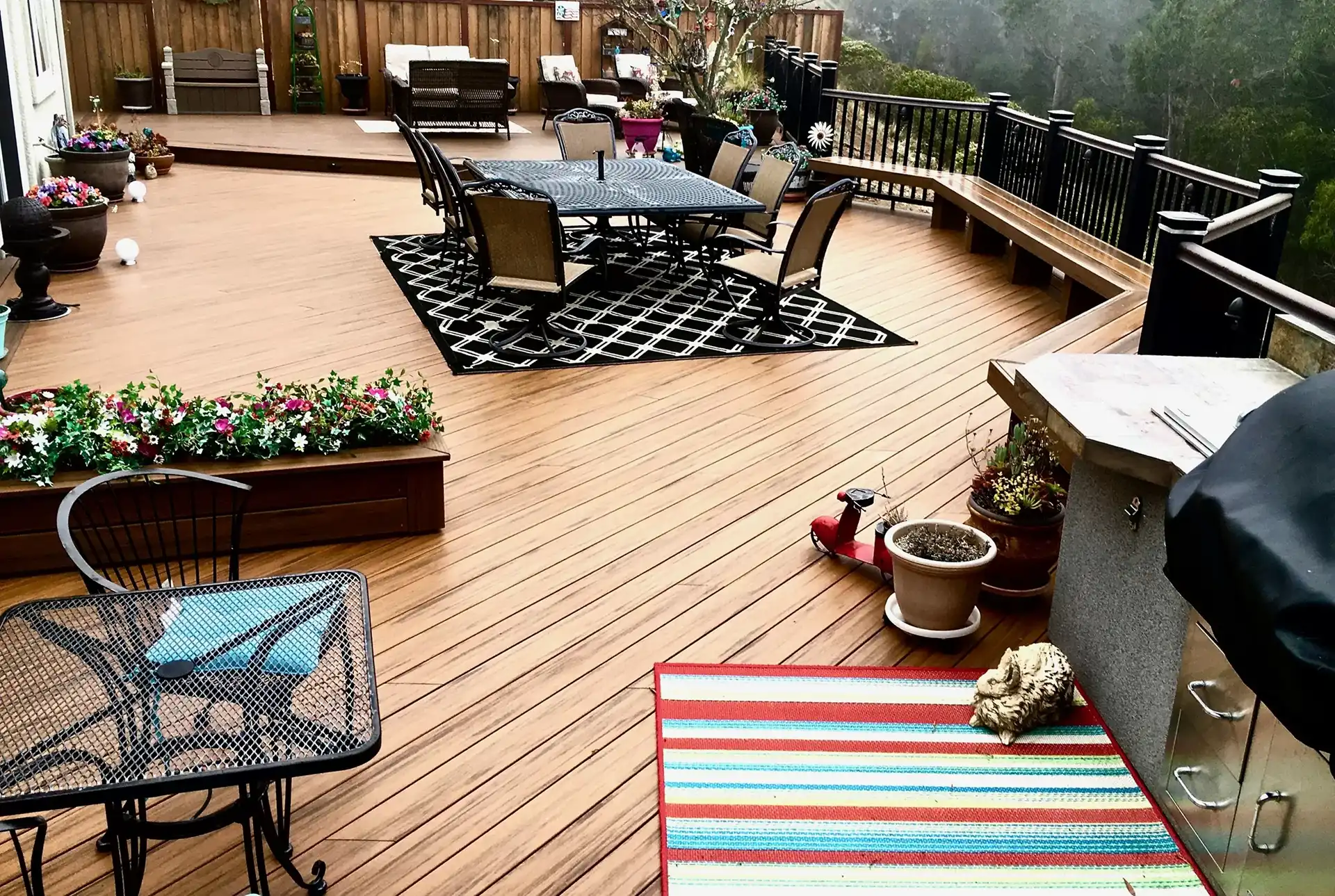
Composite decks are made from a blend of recycled wood fibers and plastic, creating durable boards that mimic the appearance of traditional wood but require far less maintenance. Unlike wooden decks, which need regular staining and sealing to protect them from the elements, composite decking is engineered to resist common issues like rotting, warping, and insect damage.
Advancements in manufacturing have made composite deck boards stronger and more customizable, offering a wide range of colors and textures to match your design preferences. Whether you want the look of rich wood grains or sleek, modern finishes, composite decking materials offer long-lasting beauty with minimal upkeep.
Benefits of Composite Decking
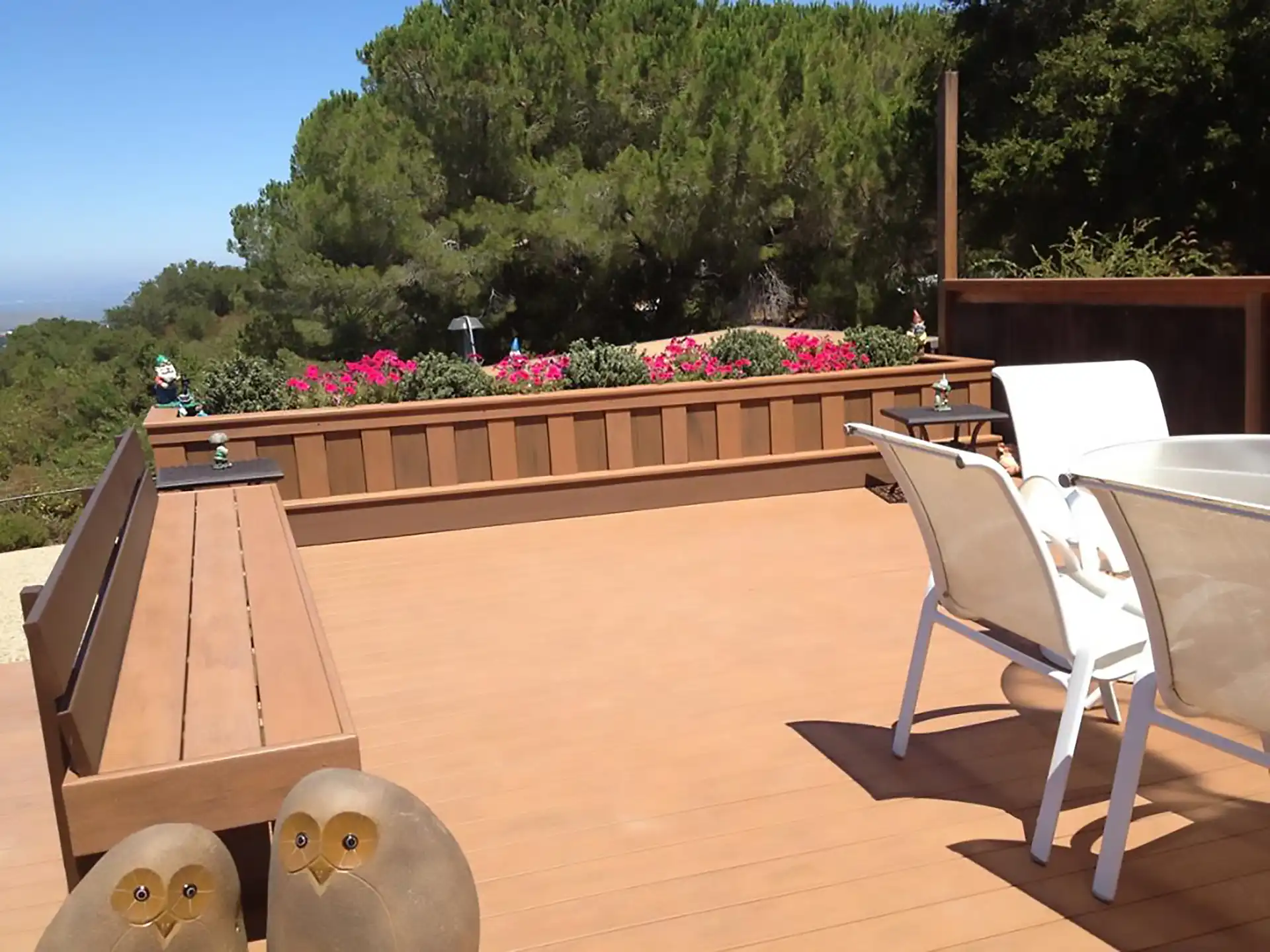
TimberTech is a top choice for homeowners when it comes to composite decking due to its durability, design options, and low maintenance. TimberTech offers composite deck boards and advanced PVC materials, each providing unique benefits for your outdoor space.
- Low Maintenance: One of the biggest advantages of composite decking is the minimal upkeep required. Composite boards only need occasional cleaning with soap and water, while advanced PVC materials are even more resistant to moisture and stains. Unlike wood, TimberTech decking never needs sanding, staining, or sealing, saving you time and effort.
- Durability: TimberTech composite decking is engineered to withstand harsh weather, resist mold, and prevent insect damage. Their advanced PVC options, like TimberTech AZEK, offer even greater durability with superior resistance to fading, moisture, and heat, making them ideal for areas with extreme weather conditions.
- Eco-Friendly: TimberTech’s composite deck boards are made from a high percentage of recycled materials, reducing the environmental impact compared to traditional wood decking. By choosing composite or PVC decking, you’re investing in a sustainable option that uses fewer natural resources.
- Variety in Design: TimberTech decking offers a wide range of colors, textures, and finishes to suit your style. Whether you prefer the natural wood look of TimberTech’s composite boards or the sleek, modern appearance of their PVC materials, you can find the perfect match for your outdoor space.
Composite Decks vs. Real Wood Decks
Choosing between wood and composite decking products often involves balancing aesthetics, maintenance, and long-term value. Wood decks offer undeniable charm, while composite options, like TimberTech, provide modern benefits that many homeowners find more practical.
- Initial Cost: Wood decks, particularly those made from pressure-treated lumber, are usually less expensive upfront than composite materials. This can be an attractive option for those seeking the natural warmth and character of wood. However, premium wood like cedar or ipe hardwood costs more than composite decking. While composite boards may have a higher initial price, they can be more cost-effective over time.
- Maintenance and Longevity: Wood decks are loved for their beauty but demand ongoing maintenance. Over time, exposure to weather can cause wood to splinter, rot, or succumb to insect damage. Composite decks like those made with TimberTech’s composite or advanced PVC materials eliminate these concerns. They are resistant to moisture, insects, and UV damage, requiring only occasional cleaning to look great year after year.
Composite Deck Designs
One of the main advantages of composite decking is its versatility in design. It allows homeowners to create outdoor spaces that complement a variety of architectural styles. Whether you prefer a classic, traditional look or a sleek, modern aesthetic, composite decking offers endless possibilities while delivering long-term durability.
- Traditional Decks: For homeowners who love the timeless appeal of natural wood but want the benefits of composite materials, composite decking can mimic the look of the wood grain while providing a longer-lasting, low-maintenance alternative. This allows you to create a deck with classic lines and textures that blend with traditional home designs.
- Contemporary Decks: If you’re after a minimalist and modern style, composite decking can deliver clean lines and smooth surfaces for a polished, uncluttered look. Composite materials can be easily shaped and customized to fit sleek, contemporary designs, giving your outdoor space a modern feel.
- Multi-Level Decks: Composite decking is ideal for multi-level designs for homes with sloped yards or for those looking to create distinct zones for dining, lounging, or entertaining. These decks allow you to maximize space and create separate areas for different activities, all while maintaining durability and style.
- Raised/Elevated Decks: If your home has uneven terrain or you want to fully enjoy a scenic view, composite decks can be elevated or raised to suit your needs. The strength and durability of composite materials make them perfect for elevated designs that can withstand the elements and provide long-term stability.
Composite Deck Features
Composite decks can be enhanced with a range of features that improve functionality and aesthetics, making your deck a true extension of your home. The versatility of composite materials allows for creative customizations that blend seamlessly into any deck design.
- Built-In Seating and Planters: Composite materials are perfect for creating built-in seating and planters that seamlessly blend into your deck’s design. These features maximize functionality while providing a cohesive and comfortable outdoor living area.
- Outdoor Kitchens: Composite decking is durable enough to support an outdoor kitchen with a grilling station, countertops, and sinks. The materials resist heat and staining, making them ideal for frequent cooking and dining outdoors.
- Fire Pits or Fireplaces: Adding a fire pit or fireplace provides a cozy and inviting focal point for your deck. Composite materials can safely handle the heat, offering a perfect setting for cool evenings.
- Pergolas: A pergola adds shade and architectural appeal to your composite deck. These structures create a relaxing retreat while enhancing the overall design of your outdoor space.
- Deck Lighting: Integrated lighting, such as solar post caps or stair lighting, improves safety and sets a warm ambiance. Composite decks easily accommodate various lighting options, ensuring your deck can be enjoyed day or night.



